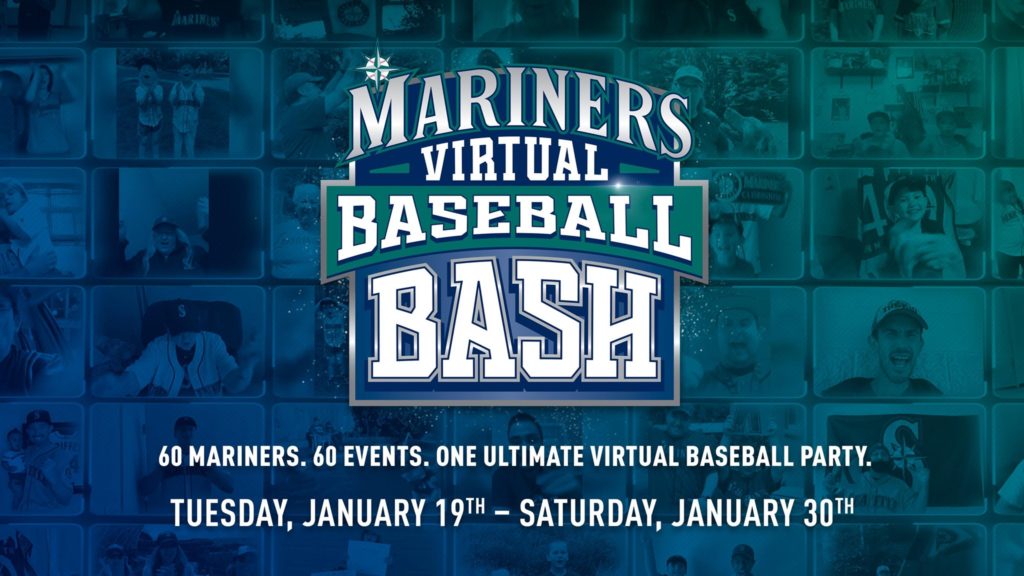
By Bill Knudsen
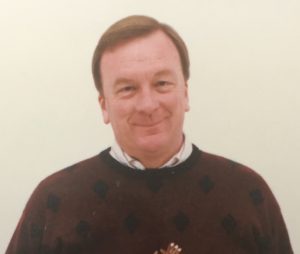 Each year, the Mariners FanFest and Pre-Spring Training Luncheon entries on the calendar mean one thing—spring training is right around the corner. They mark the last hurrah for the baseball-without-baseball season, with actual cracks of the bats and pops of the glove on the near horizon.
Each year, the Mariners FanFest and Pre-Spring Training Luncheon entries on the calendar mean one thing—spring training is right around the corner. They mark the last hurrah for the baseball-without-baseball season, with actual cracks of the bats and pops of the glove on the near horizon.
This year, the entries are a little different, with the Mariners Virtual Baseball Blast taking their place. And instead of filling a couple of days, a full block is crossed off.
What exactly is the Mariners Virtual Baseball Blast? The Mariners are billing the extravaganza as “60 Mariners. 60 Events. One Ultimate Virtual Baseball Party.” In other words, tons of virtual access for fans, with online events scheduled to take place the last two weeks of January that will include 60 current and former Mariners players, coaches, top front-office executives and broadcasters.
“Since we aren’t able to welcome 20,000 fans to T-Mobile Park this month for FanFest, we’re bringing Mariners baseball directly to the fans,” said Mariners Sr. Vice President of Marketing and Communications Kevin Martinez in a press release. “The Virtual Baseball Bash lets us connect in meaningful ways with fans all across the Northwest to give them an unprecedented opportunity to virtually interact with our players. Until we can all get together again for FanFest in real life, the Virtual Baseball Bash is a great way to get primed for the 2021 season.”
So, no zipline or autographs, but plenty of opportunity to hear from and interact with Manager Scott Servais and General Manager Jerry Dipoto, 2020 American League Rookie of the Year Kyle Lewis, Gold Glovers J.P. Crawford and Evan White, veterans Marco Gonzales and Kyle Seager, and future stars such as Logan Gilbert, Jarred Kelenic and Julio Rodríguez in events that will include clubhouse chats, live media sessions, social media takeovers and more.
The 20th anniversary of the 116-win 2001 team will be highlighted as well, with appearances by members of the team and a roundtable hosted by Rick Rizzs on the Mariners YouTube channel featuring Bret Boone, Mike Cameron, Tom Lampkin, Aaron Sele and Norm Charlton.
The kids will have their day, too, with Jan. 30 dedicated to content for the younger fans. The day will kick off with a light workout with the Mariners Moose and include a kids’ press conference with Jake Fraley and Shed Long Jr. All events will be hosted on YouTube.
The complete, updated Baseball Bash event schedule is available at Mariners.com/BaseballBash.
——————————————
Remembering Ron Fairly
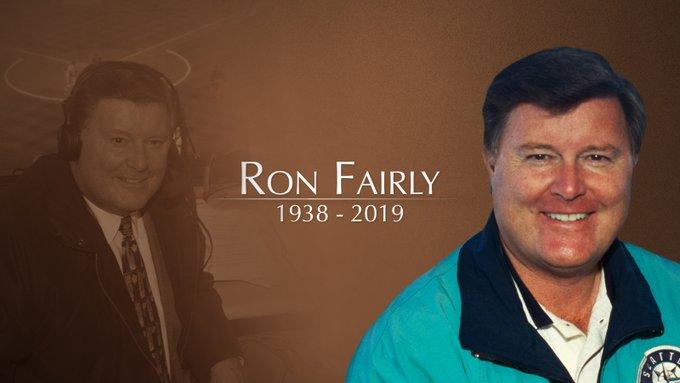
Ron Fairly died at 2:13 AM on Oct. 30. He had been fighting prostate cancer but was in remission at the time of his death. Ron actually died from the radiation, which harmed his body. He played over 20 years in The Show, was involved with the game for over 50 years, as a player and broadcaster. And was Dave Niehaus’s drinking buddy, caddy and fellow Mariner broadcaster from 1993-2006. He was a superb storyteller and could always make Dave (and Rick Rizzs) laugh.
At a party once I heard my old boss, Gene Autry, tell Niehaus that “he broadcasts a really good game. It wasn’t necessarily the game I’m watching, but you call a good game.” In other words, as he got older, sometimes he would miss-call a play or two. He would call it a home run, when in fact, the ball was caught on the warning track. Ron sometime suffered from that same malady. But we over-looked those calls because the 50+ years of baseball stories in between were priceless.
Ron and David (together) were world-class, old-time baseball guys who had decades of history and stories to share. And if you were ever lucky enough to sit behind them on one those long plane rides home from an East Coast swing, while they went cocktail for cocktail in First Class…well…let’s just say it was an “R” rated hoot! He and I recently became email buddies, and I’ll miss him. “Red” was 81 and he left three sons behind.
——————————————
RIP JIM—10/21/19
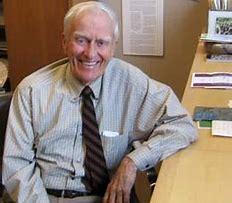 Some people like to talk about change: James R. Ellis made it happen, shaping Seattle and King County more than any person from the 1950s past the dawn of the 21st century.
Some people like to talk about change: James R. Ellis made it happen, shaping Seattle and King County more than any person from the 1950s past the dawn of the 21st century.
Ellis, the “Father of Metro”, architect of the Lake Washington cleanup, mastermind of Freeway Park and the Seattle Convention Center, died Oct. 21 at the age of 98.
“He never served in elective office but mightily shaped this region and so much of what we treasure about this special place we call home,” King County Assessor John Arthur Wilson wrote on his Facebook page. “If you marvel at Lake Washington on a sparkling Summer day, or hopped a Metro bus today, take a moment to thank Jim Ellis.”
No two brothers in our city’s history accomplished more to make Seattle better than Jim and John Ellis. We truly are blessed to have had these two men in our community. And I am doubly blessed to have known them both. Thank God, John is still with us as the Chairman Emeritus of the Seattle Mariners.
——————
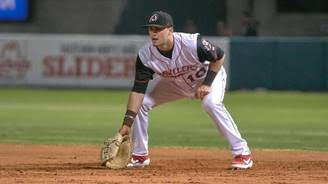
OK, were committed to rebuilding the Mariners from the ground up. So, how did our top 15 prospects do in 2019? And what can we expect in 2020? Obviously, the rankings will change going into next season, based on how they performed last season. And there are certain to be additions and subtractions to this list moving forward.
1. Justus Sheffield, LHP
Where he started and finished in 2019: Started in Class AAA Tacoma’s rotation and finished in the Mariners rotation with a detour through Class AA Arkansas.
What went wrong: Sheffield’s time with the Rainiers was a disaster, posting a 6.87 ERA in 13 appearances. His command was inconsistent, his mistakes got crushed and his confidence took a hit.
What went right: Demoting Sheffield to Arkansas allowed him to reset. He was stellar in Arkansas (5-3, 2.19 ERA in 12 starts) and looked little more poised in seven starts (5.45 ERA) with Seattle to end the season.
Where he’ll start in 2020: Given his age, experience and expectations, Sheffield should be in the Mariners’ opening day rotation.
2. Jarred Kelenic, OF
Where he started and finished in 2019: Started with Low-A West Virginia, advanced High-A Modesto and finished with Arkansas.
What went wrong: He only made it three levels in one season? Not much went wrong for the outfield prodigy. He dealt with minor injuries and slumps, but that’s expected of any player.
What went right: The Mariners knew Kelenic had an advanced approach, particularly at the plate and in his daily preparation. He rocketed through the system, posting a combined .291/.364/.540 slash line (batting average, on-base percentage and slugging percentage) with 32 doubles, 23 homers, 68 RBI and 20 stolen bases.
Where he’ll start in 2020: Kelenic likely will return to Arkansas to start the season, but the hope is that he’ll play his way up to Tacoma by July and be ready for a late-season call-up.
3. Evan White, 1B
Where he started and finished in 2019: White spent the entire season with Arkansas. He didn’t receive a September call-up but spent the last week of the Mariners’ season in Seattle working out and going to team meetings.
What went wrong: White dealt with some minor injuries, a slow start due to leg issues and the unfriendly hitting confines of the Travelers’ home field.
What went right: He posted a .293/.350/.488 slash line with 13 doubles, two triples, 18 homers and 55 RBI in 92 games while still playing his stellar defense at first base. He continued to show improvement with his power numbers.
Where he’ll start in 2020: White will compete for the starting first base job in spring training, but he’ll likely begin the season with Tacoma and be called up by midseason.
4. Julio Rodriguez, OF
Where he started and finished in 2019: Went from West Virginia to Modesto and is currently playing in the Arizona Fall League.
What went wrong: Rodriguez broke his left hand after being hit by a fastball April 12, which kept him on the injured list until June 10.
What went right: When healthy, Rodriguez, 18, continued to show why scouts think he could be a future star. After 67 solid games with West Virginia (.293/.359/.490, 20 doubles, a triple, 10 homers, 50 RBI), he was promoted to Modesto late in the season and put up cartoon numbers in 17 games — .462/.514/.730 with six doubles, three triples, two homers and 19 RBI.
Where he’ll start in 2020: With a strong spring, he could start in Arkansas at 19 and be one of the youngest players in the Texas League.
5. Kyle Lewis, OF
Where he started and finished in 2019: After playing his first full minor league season with Arkansas, he ended 2019 as an everyday outfield starter in September for the Mariners.
What went wrong: Lewis’ average and power numbers to start the season weren’t great. He was victim of bad luck and a bad hitting park.
What went right: He stayed healthy for an entire season, something he hadn’t done since being drafted in the first round in 2016. He also hit six homers in his first 10 MLB games.
Where he’ll start in 2020: He should be the Mariners’ starting left fielder when they open the 2020 season.
6. Justin Dunn, RHP
Where he started and finished in 2019: Started as Arkansas’ No. 1 starter and finished the season in the Mariners rotation.
What went wrong: His MLB debut and next start were pitch-filled with overwhelming nerves, too many walks and plenty of runners. But they were blips in an otherwise strong season.
What went right: Dunn showed durability and command of his four-pitch repertoire, posting a 9-5 record with a 3.55 ERA in 25 starts, striking out 158 batters and 39 walks in 131 2/3 innings with Arkansas. He also looked more comfortable in his final starts with the Mariners.
Where he’ll start in 2020: Dunn will be given every opportunity to make the Mariners’ opening day rotation. If he doesn’t make it, he’ll likely start in Tacoma.
7. Logan Gilbert, RHP
Where he started and finished in 2019: Like Kelenic, he moved up three levels in one season, from West Virginia to Modesto to Arkansas.
What went wrong: Some fatigue in his final outing with Arkansas made the Mariners shut him down and not allow him to pitch in the Texas League playoffs.
What went right: In his first professional season, he dominated at each stop. He posted a combined 10-5 record with a 2.13 ERA in 26 starts. He struck out 165 batters with 33 walks in 135 innings pitched.
Where he’ll start in 2020: Despite his success in Arkansas, it’s possible the Mariners start him there again to avoid juiced baseballs and the hitter-friendly Pacific Coast League with Tacoma. He should be in Seattle by the end of the season.
8. Shed Long, IF
Where he started and finished in 2019: Started in Tacoma and finished playing a utility role with the Mariners in September.
What went wrong: Long suffered a broken middle finger on his throwing hand while turning a double play for Tacoma on July 11. It required surgery and cost him at least 35 games at the MLB level in July and August.
What went right: After missing out on plate appearances because of the broken finger, he had a strong September, posting a .289/.337/.518 line with five doubles, a triple, four homers and 10 RBI in 23 games.
Where he’ll start in 2020: He will be on the Mariners’ opening day roster in some capacity. His position will hinge on whether they trade Dee Gordon in the offseason.
9. Braden Bishop, OF
Where he started and finished in 2019: Made the Mariners’ opening day roster for the trip to Japan and was on the active roster when the season ended.
What went wrong: So many things. But it started with a wayward fastball that hit him in the ribs while playing for Tacoma on May 31. Four days later, while playing for the M’s, he was forced out of a game and diagnosed with a lacerated spleen that required immediate surgery. He could’ve been playing almost every day from about July 1 to the end of the season. Instead, he missed two months of the season.
What went right: In his limited time at the MLB level, Bishop showed he was a plus outfielder who can handle all three positions.
Where he’ll start in 2020: Depending on what happens with Domingo Santana and Mallex Smith, Bishop could start the season in Tacoma or as the Mariners’ fourth outfielder.
10. Noelvi Marte, IF
Where he started and finished in 2019: Spent his first professional season with the Dominican Summer League Mariners.
What went wrong: Not much went wrong in Marte’s first professional season at the plate, but his defense was a little inconsistent with 30 errors in 63 games at shortstop. But at 17, that isn’t unexpected.
What went right: He was the best player on his team, posting a .309/.371/.511 line with 18 doubles, four triples, nine homers, 54 RBI and 17 stolen bases in 65 total games.
Where he’ll start in 2020: Given what they did with Rodriguez, and Marte’s advanced approach, he could start with West Virginia. But the logical step would be short-season Everett.
11. Jake Fraley, OF
Where he started and finished in 2019: Started with Arkansas, moved up to Tacoma and finished the season on the injured list for the Mariners.
What went wrong: A quad injury delayed his call-up to the big leagues in August, then a sprained right thumb ended his season prematurely. He also looked a little overwhelmed at the plate in his brief time at the MLB level.
What went right: An outstanding spring training caught the Mariners’ eye. He followed that up with a dominant showing in Arkansas, slashing .313/.386/.539 with 15 doubles, two triples, 11 homers, 47 RBI and 16 stolen bases in 61 games and earning a promotion to Tacoma.
Where he’ll start in 2020: He’ll compete for the starting center field spot in spring training, but his chances will hinge on what outfielders are still on the 40-man roster. Tacoma could be a likely starting point.
12. Erik Swanson, RHP
Where he started and finished in 2019: Started the season in Tacoma’s starting rotation and ended the season in the Mariners bullpen.
What went wrong: He struggled a little in his first call-up, posting a 1-5 record and 8.04 ERA in six starts and a relief appearance. His fastball was hittable, and his secondary stuff lacked command.
What went right: The Mariners decided to convert him to a full-time reliever after a hamstring injury in Tacoma forced him to the injured list. Swanson found success as a full-time reliever late, posting a 3.04 ERA with 28 strikeouts in two opener starts and 18 relief appearances.
Where he’ll start in 2020: With his role now as a reliever, he’ll compete for a multi-inning role in Seattle’s opening day bullpen.
13. Cal Raleigh, C
Where he started and finished in 2019: Started the season in Modesto and slugged his way to Arkansas.
What went wrong: Raleigh’s batting average, on-base and slugging percentages dipped and his strikeouts rose when he was promoted to Arkansas, which wasn’t unexpected.
What went right: Raleigh’s power numbers were prodigious. He totaled 25 doubles and mashed 29 homers while driving in 82 runs. The Mariners loved his work ethic — particularly his daily preparation with pitchers — and his leadership qualities in Modesto and Arkansas.
Where he’ll start in 2020: He could start in Arkansas and move up to Tacoma by midseason if he produces at the plate.
14. Sam Carlson, RHP
Where he started and finished in 2019: Did not play for an affiliated team.
What went wrong: There wasn’t much expected for Carlson this season. They wanted him to get healthy after Tommy John surgery last season.
What went right: Carlson was throwing off the mound and even pitched an inning in an extended spring training game. He is now fully healthy and cleared to participate in high-performance camp and be ready to pitch for a short-season affiliate.
Where he’ll start in 2020: When he finally starts pitching in regular games, he will likely start the season in the Arizona Rookie League Mariners with the hope of advancing to Everett.
15. Dom Thompson-Williams, OF
Where he started and finished in 2019: Played the entire season with Arkansas, his first full season at the Class AA level.
What went wrong: A sub-.300 on-base percentage, even in your first season at the AA level, is never a good thing. Thompson-Williams also struck out in 31.7% of his plate appearances, a professional career high.
What went right: Thompson-Williams fared much better on the road, where opposing fields were less punitive to hitters. He posted a .277/.332/.509 line with 16 doubles, three triples, 10 homers, 30 RBI and 10 stolen bases in 57 road games.
Where he’ll start in 2020: Given his age and progression, he should start next season in Tacoma but could be in Arkansas again.
Bill Knudsen: No Fat Lady Singing For Felix—Yet…
By Bill Knudsen
The King says there ain’t no fat ladies singing—just yet. In his first start since May, Felix Hernandez surprised many Saturday with a creditable 5.2 innings that held the Blue Jays to two runs. He says he isn’t done.
When Felix Hernandez made that return to the mound after missing more than three months to injury, he wore King Felix on the back of his jersey. That’s because all players, per an MLB “dumbass” marketing gimmick, were wearing nicknames, rather than real last names, for the weekend. Wearing King Felix made sense because of his amazing 15-year career with the Mariners, even if the sentiment behind it no longer seems relevant.
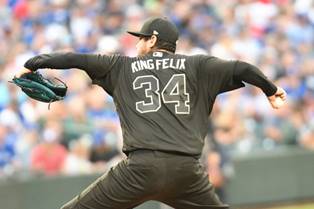 Hernandez began his major league career here at age 19 in 2005 and went on to win a Cy Young Award in 2010 (and also finish second twice), made six All-Star Games and throw the only perfect game in Seattle history in 2012. He also has more than 2,500 strikeouts and has twice led the American League in ERA. He might be the best pitcher in Seattle history, or at least tied with Hall of Famer Randy Johnson.
Hernandez began his major league career here at age 19 in 2005 and went on to win a Cy Young Award in 2010 (and also finish second twice), made six All-Star Games and throw the only perfect game in Seattle history in 2012. He also has more than 2,500 strikeouts and has twice led the American League in ERA. He might be the best pitcher in Seattle history, or at least tied with Hall of Famer Randy Johnson.
Unfortunately, his career with the Mariners most likely ends in September.
Hernandez is 33. These days, few teams want players after they turn 30 (even though some remain good into their 40s). He also has not pitched as well in recent years, with his ERA rising from a league-best 2.14 in 2014 to 3.53 in 2015, 3.82 in 2016, 4.36 in 2017, 5.55 in 2018 and 6.09 so far this season. He also lost more games than he won last season (8-14) and this year (1-4).
The velocity and command of his pitches have declined, as have his games and innings pitched.
Hernandez also has had injuries that have helped reduce his innings from a career-high of 249.2, and more than 200 in seven other seasons, to 86.2 in 2017 and 44.1 so far this season. Early on, he strained a lat muscle in his right shoulder, which put him on the disabled list from May 12 until Saturday.
“It’s been a bump in the road,’’ he said Friday of the recent injury. “But you know what, it’s just part of your career and you have to live with it … Injuries are part of your body and your career. It’s been frustrating. But finally, I’ll be back, and hopefully, I’ll be fine for the rest of the year.’’
Manager Scott Servais said at the end of the 2016 season, “Where he’s at in his career, he’s going to have to make a few adjustments in the off-season and come into spring training in a little better shape and with more urgency.’’
But Servais was more positive about him Friday, the day before the long-awaited resumption of his season.
“I do know one thing about Felix. When he takes the mound he’s a super, super competitor,’’ Servais said. “It will be a little different crowd than we usually get because the Blue Jays are here. But they will be fired up in the stands.’’
Indeed. Hernandez received a standing ovation when he took the mound, even though most in the crowd were Blue Jays fans. The King’s Court section devoted to him in the left field corner was full as well.
While his first pitch was nearly a home run, caught at the wall by rookie CF Jake Fraley, Hernandez retired the first six batters with just 16 pitches. In the third inning, he gave up home runs to Teoscar Hernandez and Bo Bichette to tie the game at 2. He also walked a batter and hit Vlad Guerrero, Jr. with a pitch.
Yet he held the Jays scoreless in the fourth and fifth innings, and he also struck out four to pass Hall of Famer Christy Mathewson for 37th place on the career strikeouts lists, with 2,505. With two outs in the sixth inning, after 88 pitches and leading 5-2, Servais pulled him, allowing another standing ovation from the crowd of 34,950.
“That’s a heck of an outing, a heck of a way to get back on the field,” Servais told reporters. “I’m really happy for him. People want to write him off and everything else, but when the bell rings, and if he’s got enough in the tank to go out there and compete, he does a heck of a job. Too bad we didn’t get him the win tonight.”
Said Hernandez: “That was fun. Finally, I’m back on the mound.”
As has been the case so many times in his career, he had little offensive support. This time, the bullpen betrayed him, too, giving up five runs in the seventh and eighth innings for a 7-5 defeat. But at least he didn’t receive the loss.
It wasn’t much of a return on the $27 million Hernandez is owed this year. The Mariners will have paid him about $217 million for his Seattle career—but the fact that he pitched well was heartening to a fan base prepared to cringe following another potentially dismal outing.
No one, including Hernandez, can tell which of his remaining starts will be his final one. But all realize the season is his last in Seattle, where general manager Jerry Dipoto has been getting rid of most of his expensive—and often most popular—veteran players in an effort to acquire younger, cheaper talent that can be difference-makers, as Hernandez once was.
“I think this is my last year (here),’’ Hernandez said. “I’m going to keep pitching. Hopefully, for sure. We’ll see. This has been a little rough this past year. I’ve been hurt for three months of the year, and we’ll see what happens next year.’’
The Mariners, with a staff ERA of 5.08 while using a ridiculous 40 pitchers, definitely need improved pitching. Hernandez needs another team to give him a chance.
“As long as I can get people out,’’ he said. “If I can get people out, I can still pitch.’’
Father’s Day idea… (Available online or at any Seattle Mariners Teamstore.)
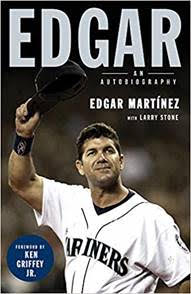 Patience, persistence, and the most unlikely of circumstances vaulted Edgar Martinez from a poor neighborhood in Dorado, Puerto Rico to the spotlight in Seattle, where he spent the entirety of his 18-year major league career with the Mariners. At last, his path is destined for one last stop: The Baseball Hall of Fame in Cooperstown.
Patience, persistence, and the most unlikely of circumstances vaulted Edgar Martinez from a poor neighborhood in Dorado, Puerto Rico to the spotlight in Seattle, where he spent the entirety of his 18-year major league career with the Mariners. At last, his path is destined for one last stop: The Baseball Hall of Fame in Cooperstown.
Long before he cemented his status as one of the finest players of his generation, Martinez honed his batting skills by hitting rocks in his backyard and swinging for hours at individual raindrops during storms. Loyal and strong-willed from a young age, he made the difficult decision at only 11 to remain behind with his grandparents while his family relocated to New York, attending school and then working multiple jobs until a chance Mariners try-out at age 20 changed everything.
In this illuminating, highly personal autobiography, Martinez shares these stories and more with candor, characteristic humility and surprising wit. Highlights include the memorable 1995 and 2001 seasons, experiences playing with stars like Randy Johnson, Ken Griffey Jr., and Alex Rodriguez, and life after retirement as a family man, social advocate and Mariners hitting coach. Martinez even offers practical insight into the mental side of baseball and his training regimen, detailing how he taught himself to see the ball better than so many before and after him.
Interwoven with Martinez’s own words throughout are those of his teammates, coaches and contemporaries, contributing a distinctive oral-history element to this saga of a remarkable career.
I couldn’t help but notice that former Mariner, Jay Bruce began his Philly career the other day with two home runs and 6 RBI in his very first game. Argh. And the interesting thing about it was that he hit them in one of the toughest parks in MLB to hit home runs, San Diego’s Petco Park.
Which brings up the question…which MLB parks are the toughest to hit a home run out of? Do you know? Can you guess?
Well here are the five toughest ballparks in the nation to get a ball out of…(Note: T-Mobile is ranked 6th)
5.) Tropicana Field, Tampa Bay
Tropicana Field is the last remaining domed stadium and it’s brutal on batters, especially right-handed players, whose home runs are in the bottom five of the majors.
4.) Angel Stadium, Anaheim
Angel Stadium consistently ranks in the top 10 for pitching-friendly categories. The 18-foot-high fences in right and right-center fields make players earn their trips around the bases.
3.) PNC Park, Pittsburgh
The Pirates’ home features a 25-foot-high fence in right field to keep baseballs from flying out of the park. PNC Park is ranked the second hardest for right-handed batters to hit home runs.
2.) Petco Park, San Diego
A remodel in 2012 helped Petco Park lose its reputation as the best ballpark for pitchers. Batters’ averages have risen since that year, but it’s still a tough place to hit one out.
1.) AT&T Field, San Francisco
It’s remarkable that Barry Bonds hit so many home runs here, given how tough it is on hitters. Whether he had synthetic help or not is up for debate, but AT&T Field is definitely not a home-run hitter’s paradise: right-center field is a whopping 421 feet away from home plate and two 21-foot-high fences help keep baseballs in play.
Player development is most important for Mariners this season, so how are they doing at MLB level? As I’ve discussed this year’s team with M’s fans and many of my friends, who have seen plenty of the Mariners through the years, there are two things I hear repeatedly from many of them.
The first: “Man, that’s got to be the worst defense I have ever seen.” And the second: “That 13-2 start may be the worst thing that could have happened.”
The defense? Well, not much explanation is needed with that one. The numbers do not lie. The start? It raised expectations outside the organization, which for some appears to have made what we are watching now all the more painful.
The Mariners’ development plan is what their development plan is, and I don’t think anyone around the club believed that the start was an indicator that this could indeed be a playoff team. Ups and downs were more than likely to be a part of the season and the Mariners just so happened to start on an “up.” The “down,” however, has been rough—to be honest—rougher than I expected. Now 50-plus games into the new direction, I’m not sure what that means, and I’m not sure we can know at this point what it means. We can take a closer look, however.
The first 50 to 60 games of a season are a good representation of where a team is at, what its needs are and where it could be heading. But the first 50-60 games in a multi-year plan? Tough to see the forest through the trees, if that makes any sense whatsoever (and no guarantees that the forest will be standing at the end), but here’s an attempt to get a better look at what we are seeing at the major league level, focusing on the position players. We’ll get to the pitchers at a later date.
First, a reminder that this is a “‘step-back” year. In my mind, the term “transition year” better defines what we saw in the building of this team. A number of what are hoped to be impact players in the future will not be seen in the big leagues this year. Right now we see a roster made largely out of a lot of roster cleanup.
Moving veterans like Robinson Canó and Jean Segura off the roster came at a price and that is part of what we’re seeing right now. General manager Jerry Dipoto has been very up front about what the 2019 roster. There are veteran players that he would like to trade for younger players or prospects. He was clear that the bullpen would not be an area of priority when it came to spending in the step-back year. There are also young players who have room for growth in the majors. In the first 50 games, we’ve seen mixed results with all of the above, and, in the big picture, all results do not carry equal weight.
Positive development in the majors
If you can get beyond the wins and losses, the focus should be on players the organization would like to see contributing on this club in 2021, and as with the team there have been ups and downs with the individuals as well. The biggest positive is what we have seen from catcher Omar Narváez, who has a slash line of .307/.377/.511. While he is striking out a bit more than he has in the past, his power numbers are up significantly. Coming in to the season, the book on Narváez was all on-base skills, no power. Right now he is on-base with perhaps developing power.
The defense is improving with Narváez too, showing the ability to steal a strike here and there and having made a few better throws to second as of late. It’s still a work in progress but Narváez is progressing and very willing to work, so much so that he showed up at the Mariners’ spring training complex in Peoria, Ariz., in January to begin work despite the fact that his first child was due in the next few weeks. He brought his wife along and got to work.
Off the field, Narváez has displayed everything you want to see in a catcher. He works well with the pitchers, I’ve heard he is good in meetings, I’ve seen him help formulate game plans, he is a good presence in the clubhouse and is team-first guy. Fifty games in, Narváez is showing what you want to see in your foundation catcher. They Mariners may have their long-term backup catcher, as well, with Tom Murphy also earning good internal reviews early.
If Narváez has been the standout, I think Daniel Vogelbach has followed the arc you would expect to see early on from a key player in his first full season. The Mariners have been careful in easing him into his first full year in part because of the roster crunch at first base and designated hitter but also in part because of his development. His line, or damage if you rather, of .258/.393/.629 (for an OPS of .1.021) has been done mostly against right-handed pitching. Against lefties this year he has hit .143/.280/.429 in 25 plate appearances. He will need to be seen more against lefties as the season goes on, but there is time for that.
In the meantime, we have been able to see Vogelbach work his way through a slump, an important milestone of sorts for a first full MLB season. From April 10 to May 12 he hit just .179/.320/.357 with 18 walks and 24 strikeouts. While he wasn’t hitting he did manage to still get on base, but strikeouts were up as pitchers seemed to be challenging him up in the zone and for a short time he was taking some uncharacteristically wild swings. In eight games since May 12, however, he has gone 8 for 26 (.308) with five walks, five strikeouts and five home runs. For an offense-only player like Vogelbach, the key will be to limit the slumps. While it is good to see the on-base percentage stay up, can he make quicker adjustments?
Less positive development in the majors
On the not-so-encouraging side of potential future position players are the outfielders. Will Domingo Santana and Mallex Smith be mainstays in the Mariners’ outfield of the future? The defensive issues have been shocking. It’s one thing to look at a player on paper, another to put eyes on them, and with both players it is very evident that there is a lot of work to be done. Fundamentals have clearly been missed. Can they learn to play better defense at the major league level? You need your future center fielder to be average in field at the absolute worst, and you need your future left fielder to not be a DH.
There are huge question marks on offense with both players as well. Smith has a decent track record but he needs to build off of it and to do that he will need to get going at the plate. Santana has been almost Jekyll and Hyde at the plate, going from showing a great approach at the plate early to striking out in just over a third of his plate appearances since April 26.
Just as there is time for things to go wrong with Narváez and Vogelbach, there is time for things to go right for Santana and Smith. If it doesn’t, however, the Mariners should be covered. While the hope is Smith will be a big part of the Mariners’ future outfield, I’m not so sure the same could be said of Santana, who was a later offseason pickup. Dipoto was looking for a right-handed outfield bat and found a match in Milwaukee, who needed a left-handed outfield bat, which the Mariners had in Ben Gamel. It wasn’t a big trade for either side and Santana didn’t appear to be as important of a target for the Mariners as others who were acquired. Regardless, with Jarred Kelenic, Julio Rodriguez, Jake Fraley, Kyle Lewis and Braden Bishop all in the farm system, there are options.
Where there are not options, at least in the next couple of years, is at shortstop. J.P. Crawford was acquired to be the guy. The grade on him right now is obviously incomplete as he has had just a handful of games at the big-league level for the Mariners, but so far, so good. The focus first and foremost with Crawford has been the defense, with the Mariners going so far as getting him to Peoria in January to begin work with infield coach Perry Hill. Crawford moves well at short and has improved his throwing mechanics dramatically. This will continue to be a development year for him, but in a step-back year the Mariners can afford to do that.
Obviously, everyone would like to see more wins now, but the progress of the individuals is what is most important to and what will ultimately determine the success or failure of the Mariners’ chosen path. That doesn’t mean there shouldn’t be goals of improvement for the team as a whole, however. There are huge challenges with the current roster and that roster continued to change starting May 25, when third baseman Kyle Seager returned from the injured list. It would be good to see some sort of roster stability in the second half, which would hopefully give the team as a whole a better opportunity to take a step forward at the end of the step-back year.
No professional sport in America’s history has put more of its athletes into the military to protect our freedoms than baseball. Here are some of the greatest ballplayers to serve in the U.S. Armed Forces:
Grover Cleveland Alexander
He is one of the winningest pitchers ever, notching 373 victories over a 20-year career with a 2.56 ERA. He also was a sergeant in the Army artillery during World War I. He was inducted into the Hall of Fame in 1938.
Yogi Berra
Eighteen-time All-Star, 13-time champion and one of the most endearing baseball players in history, New York Yankees Hall of Fame catcher Yogi Berra was a member of the U.S. Navy during World War II. In fact, Berra served as a gunner’s mate on the USS Bayfield during the D-Day invasion.
Ty Cobb
The man who is second all time on the MLB hit list with a total of 4,191, Ty Cobb enlisted in the Chemical Corps branch of the United States military in October 1918. Cobb served 67 days overseas in the Army before receiving an honorable discharge and returning to the Major Leagues.
Roberto Clemente
Pittsburgh Pirates Hall of Famer Roberto Clemente is beloved in the baseball world and with good reason. Although he seems to be remembered most for his tragic death on a humanitarian mission, it shouldn’t be forgotten that Clemente was a Private First Class in the Marine Corps for almost 10 years of his baseball career
Jerry Coleman
An All-Star in 1950 for the New York Yankees, Jerry Coleman is in the Hall of Fame as a broadcaster for the Padres. He was a Marine pilot, joining in 1942, and flew 57 missions in a dive bomber. Of note, he was a bystander when Ted Williams crash-landed.
Joe DiMaggio
New York Yankees legend Joe DiMaggio served in the U.S. Army Air Forces from 1943-1945. The star that he was, DiMaggio was initially given preferential treatment by the Air Force — so much so, that at one point DiMaggio demanded to see live combat from his superiors. His request was denied. DiMaggio still holds the Major League record for most consecutive games with a hit at 56 in a row.
Larry Doby
Doby was drafted in 1943 and served as physical education trainer in the Navy. A center fielder for the Indians, Tigers and White Sox, Doby was inducted into the Hall of Fame in 1998 by the Veteran’s Committee.
Bob Feller
Just two days after the attacks on Pearl Harbor, Hall of Fame pitcher Bob Feller became the first American professional athlete to enlist in the armed forces in response to the attacks. Feller served nearly four years in the Navy as gun captain before being honorably discharged as a chief petty officer. Upon returning to the American League in 1946, Feller picked up where he left off, leading the AL in strikeouts for three straight seasons.
Whitey Ford
A 10-time All-Star and six-time champion with the New York Yankees, pitcher Whitey Ford served in the Army during the Korean War from 1951 to 1952. The legendary southpaw had his best year in the majors in 1961, when he won his one and only Cy Young Award, and was named World Series MVP.
Hank Greenberg
Hall of Fame Detroit Tigers first basemen Hank Greenberg missed out on four years of his career as a baseball player serving in the Army in World War II. In fact, Greenberg was the first player in the American League to choose to register for the draft. The 47 months Greenberg served as a sergeant are the longest any Major League player has served in the armed forces.
Whitey Herzog
Serving in the Korean War, Herzog missed the 1953 and ’54 seasons. That didn’t prevent him from making the Hall of Fame in 2010 as a Veteran’s Committee selection.
Monte Irvin
Another Hall of Famer drafted in the ’40s, Monte Irvin served in the U.S. Army. “Mr. Murder” was a standout for the New York Giants, driving in 121 RBI in 1951, and was inducted into Cooperstown in 1973.
Christy Mathewson
After playing a Hall of Fame baseball career for the New York Giants, pitcher Christy Mathewson enlisted in the Army in 1918 to help the fight in WWI. Mathewson served in the Chemical Services alongside fellow Hall of Fame player Ty Cobb. After his service, Mathewson returned to coach the Giants in 1919.
Willie Mays
Legendary Giants outfielder Willie Mays’ baseball résumé is simply amazing. Mays was a 24-time All-Star, 12-time Gold Glove winner, two-time MVP and hit 660 homers in his career. If those accolades weren’t amazing enough, Mays would have without question added to them had he not missed 266 games in 1952 after being drafted into the Army to serve in the Korean War.
Stan Musial
Stan the Man is one of the greatest hitters who ever lived, winning three MVPs while batting .331 for his career with 475 home runs. He was first-class seaman in the Navy and was stationed at Pearl Harbor, where he repaired ships. He was also honored with the 2010 Medal of Freedom.
Pee Wee Reese
Dodgers Hall of Fame shortstop Pee Wee Reese served in the Navy during World War II from 1943 to 1946. Along with being a 10-time All-Star, Reese is also fondly remembered as being vocal in supporting his teammate Jackie Robinson in his successful attempt to break the color barrier in professional sports.
Phil Rizzuto
Rizzuto served three years in the Navy with fellow great Pee Wee Reese. He saw combat in the Pacific Theater. Despite missing three years of his career, Rizzuto had a Hall of Fame career as a shortstop with the New York Yankees and became a legendary announcer as well.
Jackie Robinson
Not only did Jackie Robinson have the courage to break the color line in professional sports, but he also had the courage to serve in the Army as a second lieutenant. Unfortunately, Robinson’s military career was derailed due to racial tensions, as he was nearly court-martialed after refusing to give his seat up on a bus to a white officer. In the end, no legal action was taken by the military, and Robinson was given an honorable discharge in 1944.
Nolan Ryan
MLB’s all-time strikeouts leader was enlisted in the Army Reserve, and his call-up in 1967 caused him to miss that season with the Mets. He would return a year later for his first real season in the majors, and the rest is history.
Tom Seaver
A 12-time All-Star and three-time Cy Young Award winner, Tom Seaver joined the United States Marine Corps in 1962 out of high school. After serving one year for the Marines posted in 29 Palms, Calif., Seaver went on to play baseball at the University of Southern California before embarking on his Hall of Fame career.
Enos Slaughter
Enos Slaughter enlisted in the Air Force with the plan of being a pilot. However, he found out he was colorblind so he became a phys ed instructor. As a Hall of Fame outfielder, he won two World Series with the Cardinals.
Duke Snider
With 407 career home runs, Dodgers Hall of Fame slugger Duke Snider also served 19 months in military. His main job was to wash the dishing and never saw combat.
Warren Spahn
One of the greatest pitchers of the live ball era, Warren Spahn chose to enlist in the United States Army in 1942 after playing one year in the minors. Spahn saw live combat at the Battle of the Bulge and was awarded a Purple Heart for his service. After leaving the military in 1946, Spahn would go on to win 363 games in his Hall of Fame career.
Hoyt Wilhelm
Hoyt Wilhelm enjoyed a 21-year, Hall of Fame career pitching for several teams as a tricky knuckleballer. He notched 143 career victories overall. He also joined the Army in 1942 and was wounded at the Battle of the Bulge. Wilhelm earned a Purple Heart as a staff sergeant and was inducted into Cooperstown in 1985.
Ted Williams
When baseball fans talk about the greatest players ever, it is often forgotten that Boston Red Sox legend Ted Williams missed out on seven prime years of his career when he chose to serve in the United States Marine Corps during both World War II and the Korean War. “The Greatest Hitter Who Ever Lived” won his first AL MVP award and played in his only ever World Series upon his return to the majors in 1946.


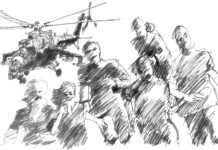
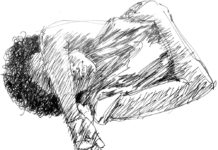


Good stuff! Loved all the observations. While the Mariners will certainly miss Cano’s bat in the lineup—and by the way, I think “Robinson Cano” was Daniel Dafoe’s best novel—what I WON’T miss over the next 80 games is the guy loafing his way down the first base line. One might think—for 24 million dollars a year—that a player could run hard and not assume the out. The former manager, Pete Rose, may have bet on baseball, but when he was a player, he hustled down the line every time. Heck, he even ran to first after he was WALKED.
Another thing that can no longer be assumed is that Cano will wind up in Cooperstown—especially after this drug violation. If he DOES, a lot of players from the steroid era will likely get in too.
Comments are closed.